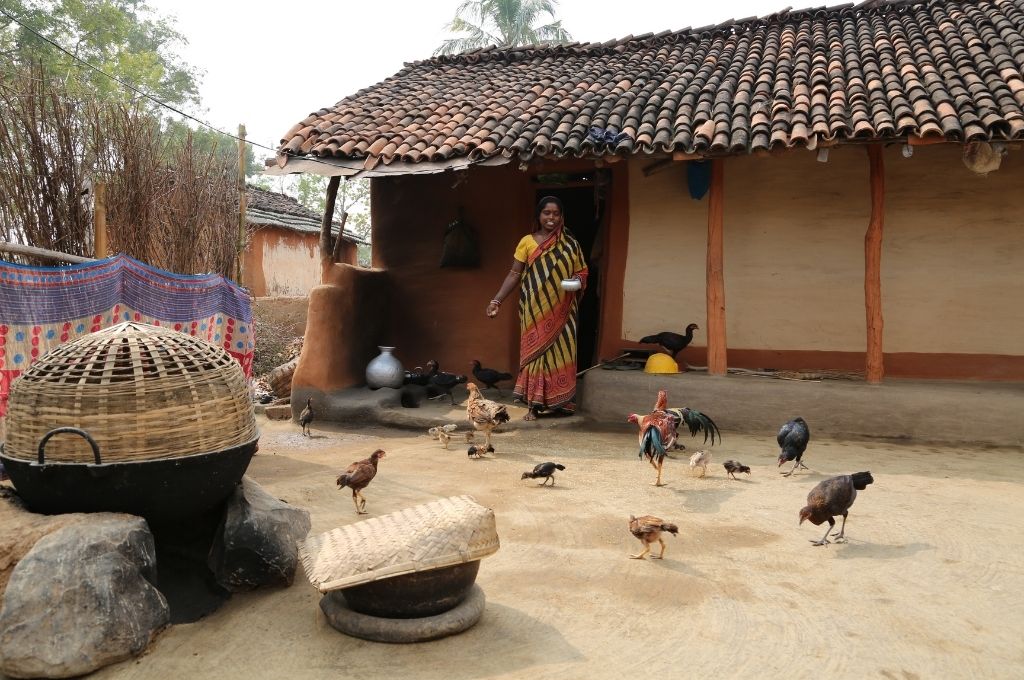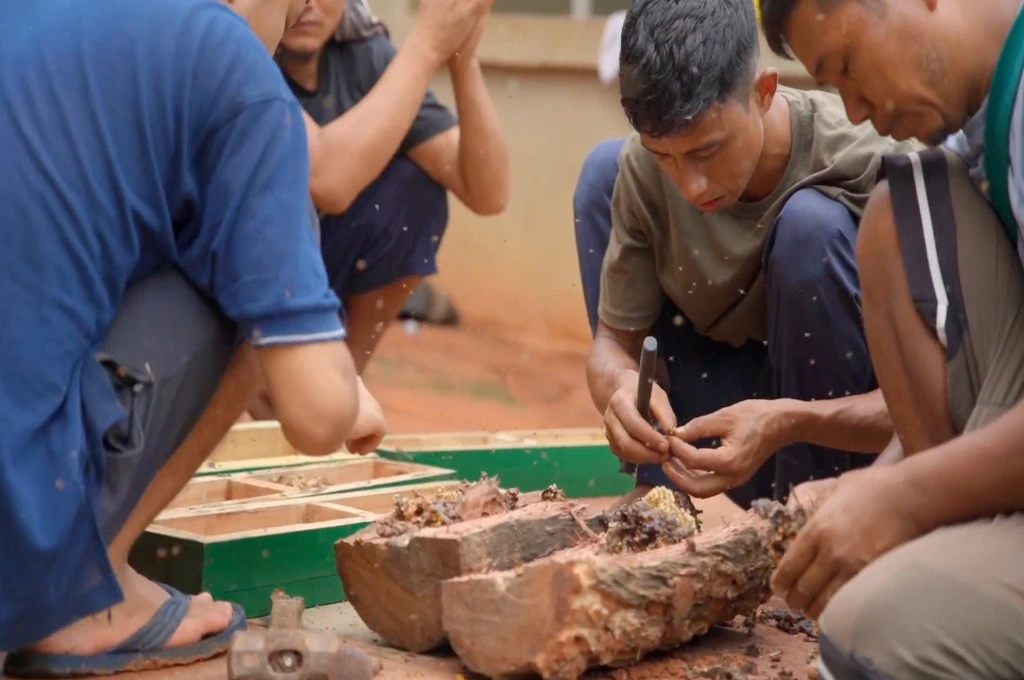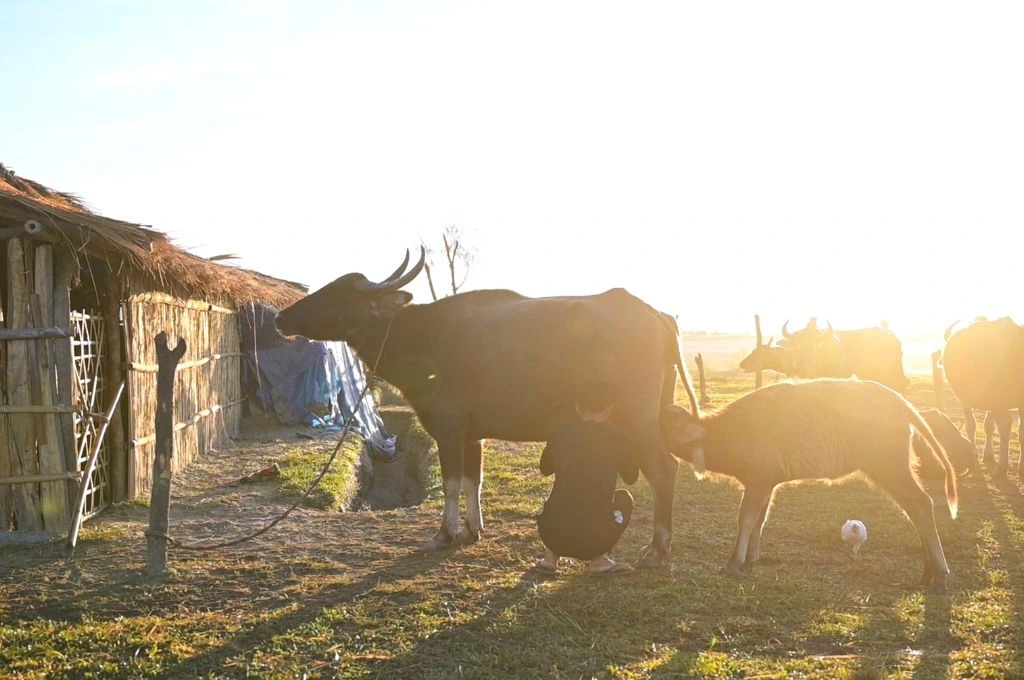The 20th Livestock Census reports that, between 2012 and 2019, there has been an increase of 10 percent and 17 percent respectively in the population size of small livestock such as goats and poultry. The number of backyard poultry birds has grown by 45.79 percent in the same period. This sharp growth of small livestock, especially backyard poultry, is an interesting development since they are usually reared by landless families or small and marginal farmers on a very small scale.
According to experts, this growth can be explained in two ways. One, state governments have been promoting alternate livelihoods for small farmers by distributing birds for free or at subsidised rates. Or two, the data collection for this census was more robust than before. Another possible explanation is the large-scale promotion of self-help groups by the National Rural Livelihood Mission, which provides the community with access to credit and funds to invest in livelihood activities such as the purchase of goats and poultry. While there is no study that definitively explains this rise in numbers, the more important question is whether this increase has positively impacted the lives of the smallholder farmers.
Small livestock, big benefits
We at PRADAN have been working with small and marginal farmers in Central India’s tribal belt for more than a decade. This has brought forward some critical insights about the importance of small livestock farming and the role it can play in bolstering livelihoods. Central India is one of the most economically marginalised regions in the country with more than 30 percent of the population experiencing multidimensional poverty. Because of the dominance of rain-fed subsistence agriculture in this region, communities depend heavily on forest resources, livestock rearing, and wage labour for income. Adivasi communities, in particular, have traditionally reared goats, pigs, sheep, and backyard poultry as an economic buffer to be sold in times of distress. Usually, the poorer the family, the higher the relevance of livestock in their life. Given the abundance of forest lands, wastelands, and availability of small backyards in the households, the region is immensely favourable for rearing small livestock. Finally, one of the biggest advantages of small livestock, especially backyard poultry, is that they can easily be reared by ultra-poor families, single women, the elderly, and people with disabilities.

Farmers are more likely to pay for the health of their larger, more expensive animals, which are fewer in number, than their many smaller backyard ones.
In spite of all these possible benefits of small livestock farming, poorer families are often unable to harness its full potential. The main reason for this is the frequent occurrence of highly infectious diseases like Newcastle disease and fowlpox in the case of poultry, and Peste des Petits Ruminants, enterotoxaemia, foot-and-mouth disease, and goatpox in the case of goats, which can sometimes wipe out a farmer’s entire stock. While these deadly diseases can be controlled with regular vaccinations, the poorly resourced animal husbandry department chooses to focus on larger animals such as cows and buffaloes, failing to effectively provide health services to smaller livestock. Farmers are also more likely to pay for the health of their larger, more expensive animals, which are fewer in number, than their many smaller backyard ones.
To add to this, medicines and vaccines are not easily available in the open market, and even if they are, farmers usually need experts to vaccinate their livestock. Further, factors like the lack of knowledge on improved rearing practices—such as the adequate provision of shelter, supplementary feed, and clean drinking water—limit the effectiveness of small livestock farming.

Another constraining factor for farmers is the non-functioning market for both inputs and their products. Services such as feed availability, healthcare, breeding, and credit or insurance services are often absent from rural regions. And, finally, the meat market is also highly unorganised and skewed towards the buyer. Birds and goats are typically sold on an eye estimate and not according to their actual weight. Distress selling is also very common and farmers have no negotiating power with the traders. Typically, stocks are sold off at throwaway prices before the onset of monsoon since farmers fear disease outbreaks. Though small livestock rearing can support the most marginalised communities, these bottlenecks make the activity extremely risky and prevent people from investing in it.
Building community-led solutions
To promote small livestock farming and address farmers’ concerns such as high mortality of animals, we’ve piloted a range of interventions over the last decade. What worked was bringing services to the farmers’ doorstep and making this system financially sustainable.
To tackle the issue of high mortality, local women were trained as pashu sakhis—which translates to ‘friends of livestock’—to provide vet-care services such as vaccination, deworming, and basic treatment for illnesses at the doorstep of the rearer.

Simultaneously, we organised women rearers into producer groups at the village level. This allowed non-SHG members as well as ultra-poor households to become members of the group. Each producer group has approximately 50 members who deposit money in advance to access animal healthcare services at their doorstep. This includes care for all small livestock, which covers backyard poultry, goats, and sheep. Depositing the advance money helps the collective to get the services of the pashu sakhi, who can place orders for medicines and vaccines. This ensures timely delivery of healthcare services at the doorstep. Each pashu sakhi is linked with one or two producer groups, depending on the size of the village. Not only does this increase access for farmers, but it also serves as a source of income for the pashu sakhis. On average, a pashu sakhi engages with 80–120 farmers, which can ensure an income of INR 3–5,000 per month.
Pashu sakhis also train members on better rearing and management practices such as preparation of supplementary feed, care of mother and kids, and shed management. Further, the group meets once a month to track the progress of its members, generate and aggregate demand, as well as negotiate with the market for input and market services. The group also collects service charge from members based on the number of livestock each family owns. Group members monitor the pashu sakhi’s work and pay the service charge accordingly.
We have seen that the provision of healthcare services has increased farmers’ confidence in the activity, decreased distress selling of livestock, and helped them develop their business. A farmer can now maintain 10–12 goats and 30 poultry birds with minimal efforts and earn an additional income of INR 30–40, 000 per annum.
Leveraging the potential of small livestock promotion
Apart from substantially increasing household incomes, rearing small livestock is easy to do and requires little investment. It has the potential to economically support most vulnerable households, the elderly, single women, people with disabilities, and landless families at a large scale.
To do this successfully, our experience shows that smallholders need to be mobilised into collectives, their capacity needs to be built, and they must have a supportive ecosystem. This requires a strategic shift from merely providing financial support for the purchase of animals to investing on building strong community institutions and providing programmatic support. To make this shift here’s what different stakeholders need to do:
1. Government
Through bodies like the NITI Aayog or National Rural Livelihoods Mission, the government can bring together stakeholders to develop comprehensive policy-level changes in support of farmers rearing small livestock. In addition, the government should focus on aligning the various existing government schemes catering to smallholders, such as the National Livestock Mission, the National Rural Livelihoods Mission, the farmer producer organisations scheme, and so on. Further, it can provide additional investments to strengthen the animal husbandry department and streamline backward linkages by setting up cold chains, breeding units, quality chick/mother units, fodder banks, silage-making units, etc.
2. Civil society organisations
Given their presence on the ground, the primary role of civil society organisations should be to mobilise communities into collectives, generate awareness, and build knowledge around rearing and management practices. As the activity requires regular support, training local youths as pashu sakhis or entrepreneurs to help set up healthcare and market services at the doorstep is a crucial measure that can be undertaken by these organisations as well. Small livestock rearing is an emerging activity and there is not much research on it. Organisations working in the space can conduct pilots to set up value chain systems, bring innovations and technological solutions, decode knowledge for large-scale replication, and/or support the government in scaling up their prototypes.
3. Funders
Donors or funding agencies should focus on building the sector alongside civil society organisations and the government. While the government plays a role in scaling up models, donors must proactively provide long-term financing to civil society organisations for community mobilisation, institution building, and training and capacity building of staff, local entrepreneurs, and community resource persons. Besides institution funding, donors need to provide funds to nonprofits for experimenting, innovation, and piloting. To drive policy change, investments should also be made in developing learning platforms for civil society organisations. Until and unless donors up their investments in these areas, small livestock promotion will continue to perform suboptimally and we will fail to leverage its potential to better the lives of vulnerable farmers.
—
Know more
- Read this practitioner’s manual on small livestock rearing.
- Learn more about how livestock can be a sustainable source of livelihoods.
- Read how communities in Meghalaya are reviving traditional aquaculture and connecting it to the market.





